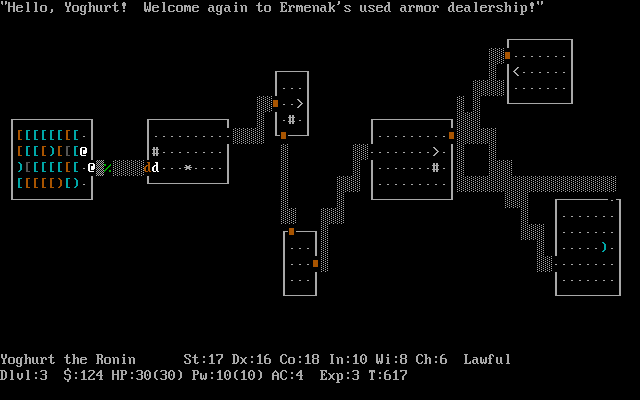

Maze generator algorithm c# code#
} // end of Procedure namespace Code language: JavaScript ( javascript ) yield return null yield return new WaitForSeconds( 0.05f) The procedure takes in the two-dimensional index of the cell (x, y) and the direction. The Pseudo Codeįoreach (Directions dir in Enum.GetValues(Ĭreate a function that removes the cell wall based on the direction. For an exhaustive list of implementations, do check out the Wikipedia page. There are many other ways of implementation.

We will apply the backtracking algorithm with an explicit stack to implement our Maze. This figure shows the 2d scene with camera manipulator 2d prefab. Set the Main Camera game object to the M Camera field of the CameraManipulator2D component of Canvas_CameraManipulation2D prefab. For simplicity the walls form a square grid.ĭrag and drop the Canvas_CameraManipulation2D prefab from Resources/Prefabs folder. A maze cell that comprises 4 walls for a cell.The 2d camera manipulation, and (Read Implement Camera Pan and Zoom Controls in Unity2D to understand and implement a 2d camera manipulation for pan an zoom controls).The starter package comprises two prefabs. Create a new Unity2D project and import the starter-package.package file. The Unity Projectĭownload the starter package for this tutorial. The maze generator will traverse these cells iteratively and remove walls in four possible directions, thus forming a maze. We can create a maze by starting with a predetermined arrangement of cells (a rectangular grid in our case) with walls between them. There are many methods/algorithms to generate a maze The maze-generation process is the process of designing the position of paths and walls in the Maze. Arguably, the original first-person shooter game, literally named Maze, was created by students on Imlac computers at a NASA laboratory in 1974 – source Wikipedia.Ī maze is a kind of game where a player moves in pathways with many branches to find a way To fix the problem at the cause, an algorithm that can backtrack what is being generated may be used (could be recursive but not recommended).Not too far ago, mazes were somewhat central to video games. That is one way of doing so, but it does not guarantee the time of generating and it is pure brute force. You could, however, keep generating and disregard those invalid, and then spit out only valid solution. This is not a simple task in order to always generate a valid solution. I am not sure how much the thread creator familiar with path finder algorithm. A way of going straight forward (close to brute force) only won't always give a valid solution because eventually certain squares will have no value to fill in (1-9). In other words, a valid sudoku is only one of correct solutions generated by a sudoku generator, but there are tons of way to fill in those 81 slots and won't be a valid sudoku. I do not disagree that a valid sudoku always has a solution, but that does not apply to a sudoku generator. I think you are not on the same pace with me here. I agree it won't hold good for other types of searches but I'm just making this Sudoku-specific Algorithm. Yes in a Sudoku, there will always be a solution. That's why the '0' is filled in his solution because it is impossible. If that happens means there is something wrong with the Sudoku algorithm. Assign sudoku row 1 to 9 unique numbersĬout<<"-"< Repeat the process untill all zeroes are replaced by a number from 1-9. Columns, 3x3 grids and rows should have unique numbers from 1-9.Ĥ. My logic in tackling the problem is as follows:ġ.Create a 9x9 array and fill the first row with 9 unique random numbers.Ģ.Fill the rest of the spaces with zeroes(0).ģ.Produce a random number and test the number to the sudoku rules. The grid should display unique numbers every time it is run i.e the numbers have to be randomised. My main aim is to create a completed 9x9 grid that follows the rules of sudoku. I have been working on a sudoku generator.


 0 kommentar(er)
0 kommentar(er)
